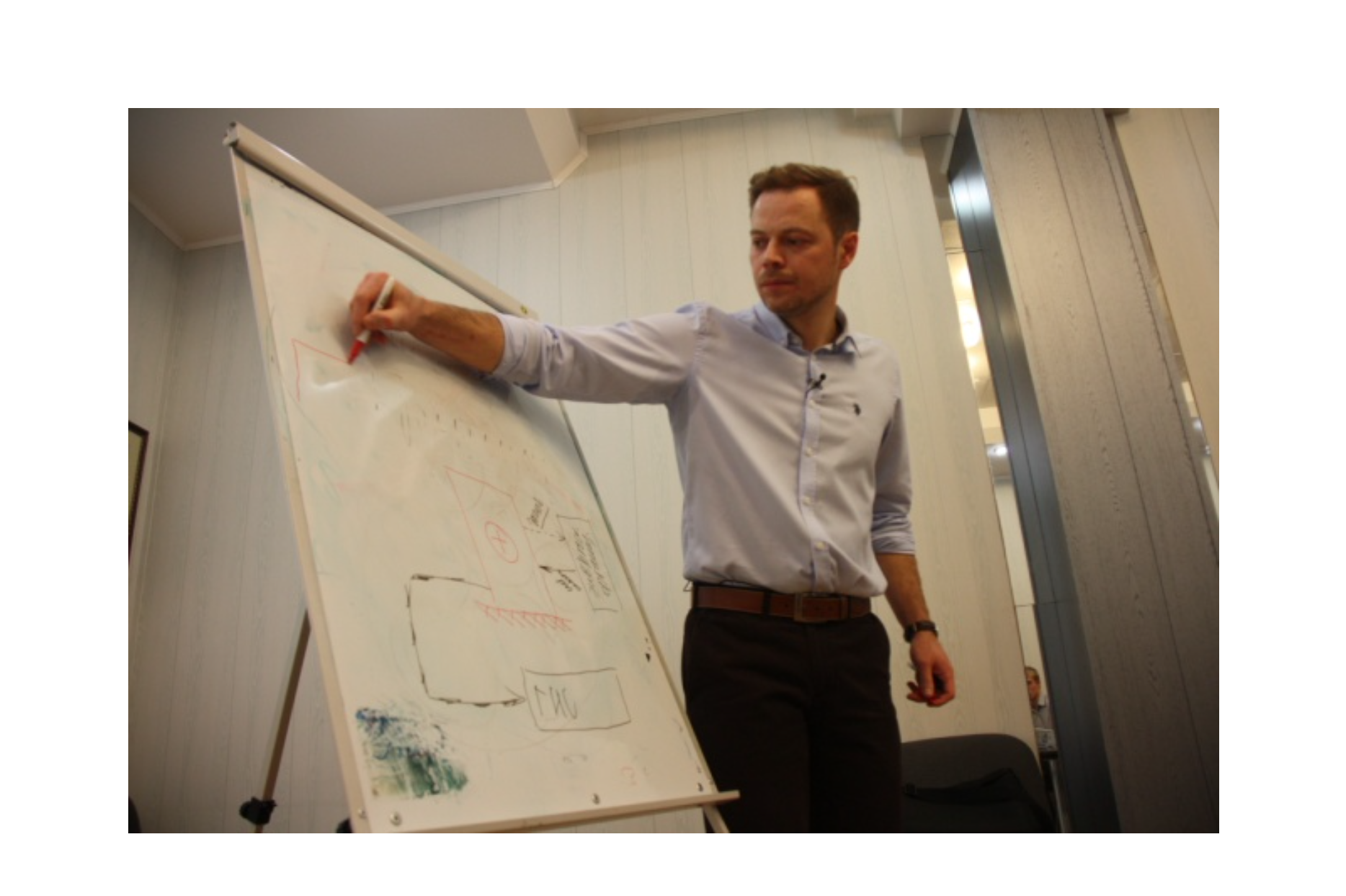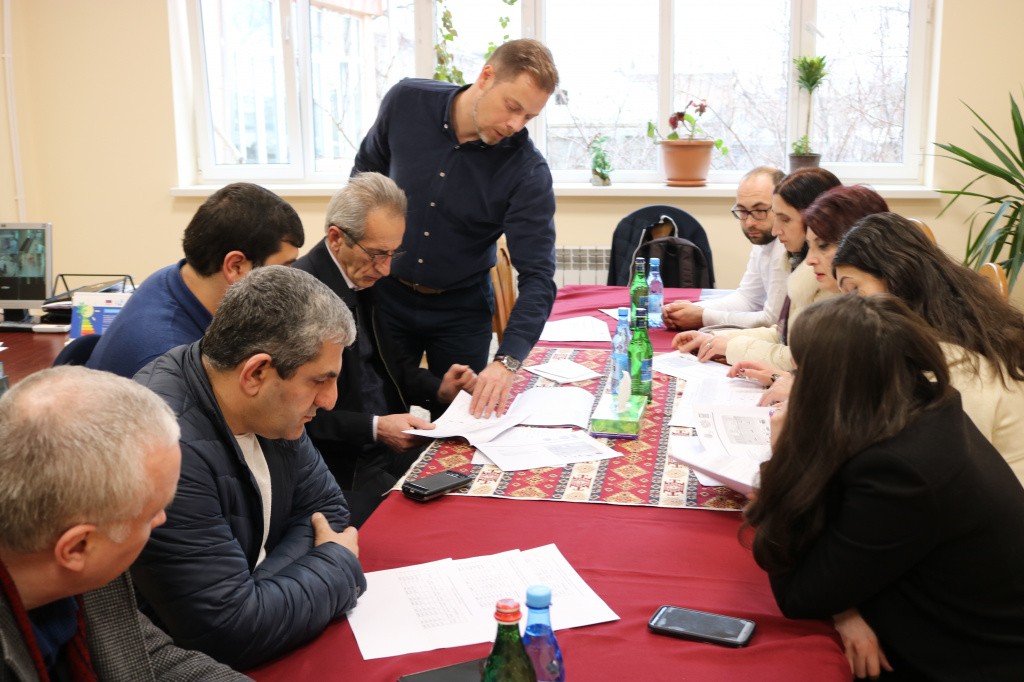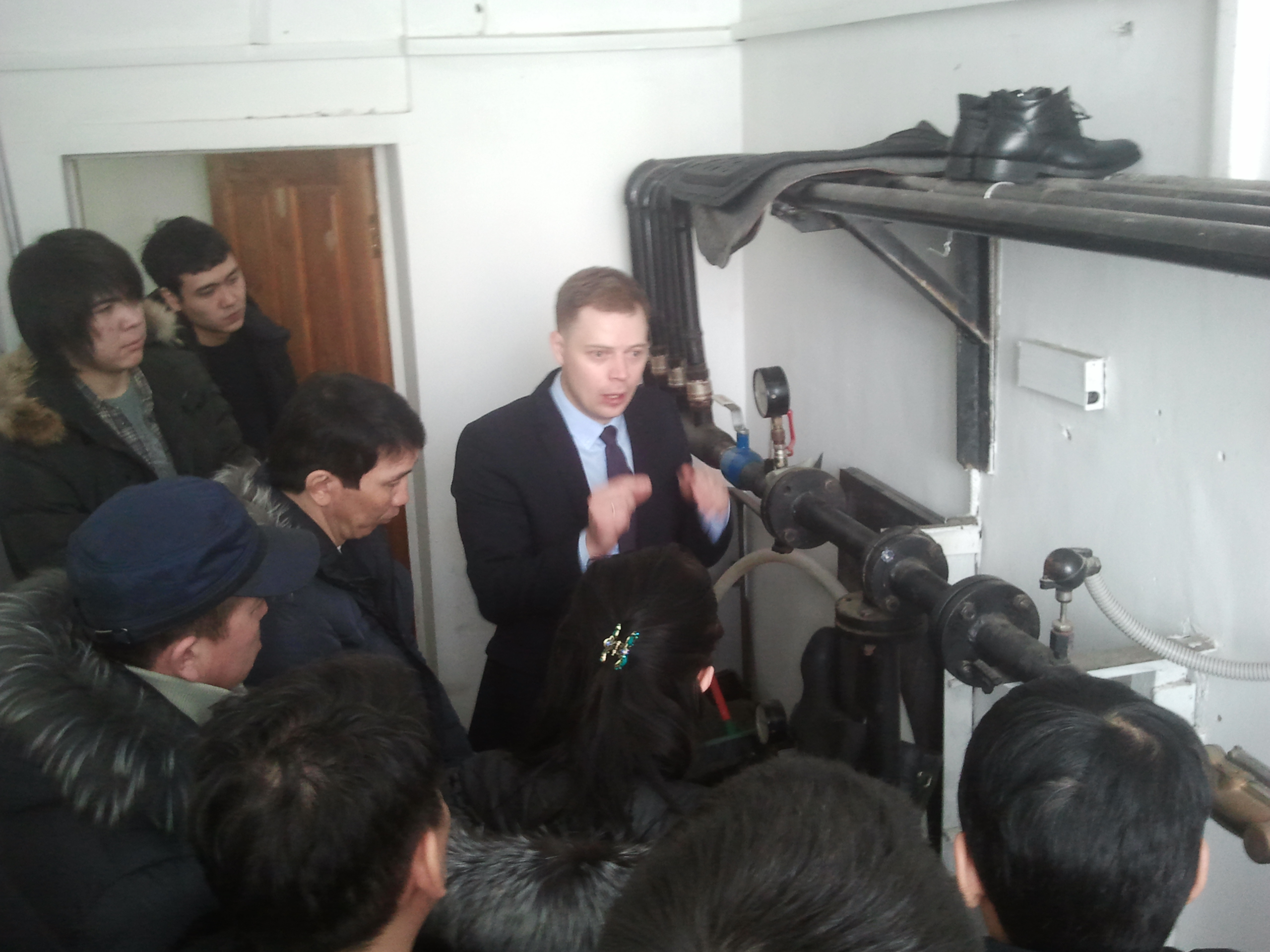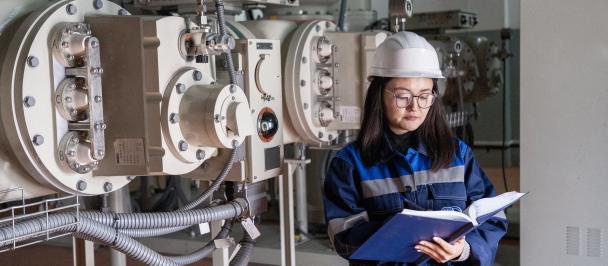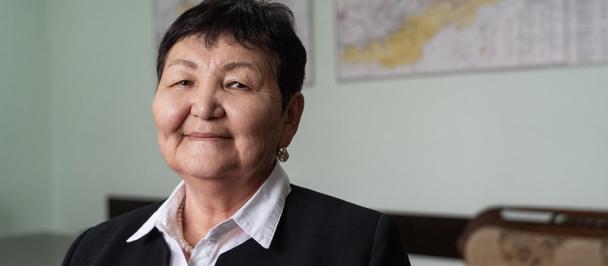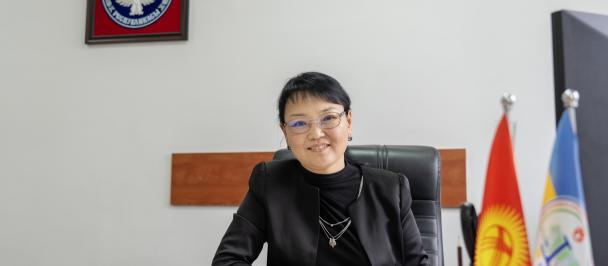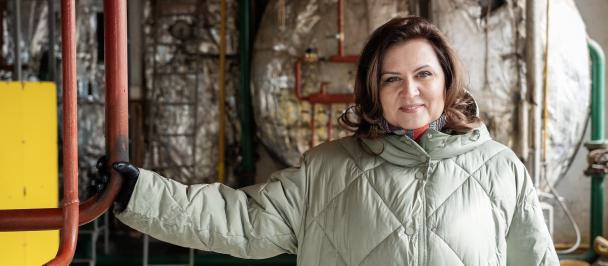In the Republic of Kyrgyzstan, there are about 9,780 public buildings, and half of them were built between 1950 and 1980, with a service life of 40 to 70 years. Public buildings are one of the largest energy consumers in the country, accounting for about 850GWh of energy per year and 10% of the national energy consumption.
Today, due to the lack of adequate funding, there are several problems with planning capital repairs and energy efficient modernization of public buildings. This has a huge impact on the current state and living conditions of people in buildings, at the same time maintaining and ensuring comfort is an important social task.
To solve the problems of creating a financing mechanism for energy efficient modernization within the framework of the UNDP and Russian Trust Fund project "Promoting Energy Efficiency in the Countries of the Eurasian Economic Union", expert Andrey Dodonov was involved, who developed recommendations for the Energy Saving Fund and Investments for the country with the possibility of implementing a financial repayment mechanism to finance energy efficient modernization of public buildings.
We asked Andrey some questions regarding the developed recommendations, as well as some practical issues of planning and financing energy efficient public buildings.
Good afternoon! Please briefly describe the recommendations developed by you:
Good afternoon, the presented work includes practical recommendations for the Republican Fund for Energy Saving and Investment (RFEI) with the possibility of using a financial repayment mechanism for financing energy-efficient public buildings. This work also details the main practical steps of the methodology for developing targeted programs for energy saving and energy efficiency cities and regions, as well as the methodology for selecting objects for inclusion in investment programs in order to attract extrabudgetary funding.
In your opinion, what are the main problems associated with planning, financing and implementing energy efficient measures in public buildings, within the framework of the local budget, as well as targeted financing and subsidies?
In my opinion, the following problems can be identified:
1) Savings in the regional local budget as a result of saving fuel and energy resources in public buildings is not possible, which is the main obstacle to the implementation of energy efficient modernization.
2) Planning and procurement of fuel and energy resources by a public building is subject to annual adjustment taking into account the current consumption of energy resources (coal, electricity, etc.) for the previous year and approval for the next budget year. Services from the republican budget may take time, which leads to delays in the obligations of public buildings in relation to resource supplying organizations, which affects the liquidity of the local regional budget.
I want to draw your attention to the fact that, as a rule, planning for the acquisition of fuel and energy resources by organizations is not systematic due to the lack of analysis of consumed resources for previous periods with reference to changes in external temperature conditions and determination of the base year.
3) The local regional budget covers most of the costs of utilities, repairs, and construction of public buildings. The annual budget, including overhaul of existing buildings, is around 70 - 80%.
Due to the lack of a detailed register of public buildings, which includes collected and aggregated information on the technical and energy state of facilities, as well as information on consumption and its forecasting based on past periods with reference to the average consumption level (base year), it is not possible for the local budget to implement targeted planning of budget allocations for basic maintenance and repair of the building.
At the moment, there is no mechanism for forming an aggregated program for basic maintenance and repair of a building, where the introduction of small and medium-cost energy-efficient modernization measures can be part of the work carried out within the framework of building renovation programs.
4) Most of the public buildings in Kyrgyzstan include more than 50% of the stock of buildings that were built in the period of 1950 to 1980, with a service life of 40-60 years and a degree of wear of over 50-60%. This also affects the feasibility of implementing energy efficient modernization and investment programs, since investment programs or energy efficient modernization programs aimed at implementing low or medium-cost measures are designed for buildings with a low level of wear and tear in order to exclude high-cost capital repairs.
5) Lack of "energy documentation" in public buildings in the form of energy certificates. This makes it difficult to determine the level of consumption of energy resources and accordingly forecast the correspondence of the thermal technical characteristics of the building to the possibilities of maintaining optimal conditions for indoors, including the potential for energy efficiency. For existing public buildings that are not undergoing the energy efficient renovation program which make up a large share of all public buildings in Kyrgyzstan, the energy certification process is voluntary rather than mandatory.
Given the extensive list of problems, could you give examples of current legislation in Kyrgyzstan and how it determines the institutional framework for creating comfortable conditions for the implementation of financing mechanisms for energy efficient modernization of public buildings?
Regarding comfortable and favorable indoor conditions, it should be noted that within the framework of the current republican legislation, all the minimum conditions necessary for creating a structure have been created, on the basis of which it is possible to initiate and launch a financing mechanism using a special accumulation account to finance energy efficient measures at the expense of cash received. In the developed recommendations, a methodology was proposed for creating targeted programs for energy conservation and efficiency in public buildings, since from the point of view of legislation, there is a lack of clear instructions, regulations, and official recommendations.
To date, Kyrgyzstan has adopted certain legislations aimed at solving the identified problems. Within the framework of the Action Plan for the implementation of the Program for the Development of the Green Economy in the Kyrgyz Republic for 2019-2023, activities are outlined to solve problems and better implement its goals.
For example, Section 11 lists the following main activities of the Green Economy Program:
- Development of a regulatory legal framework to stimulate the implementation of energy-saving measures and technologies in buildings and structures (Deadline: 4th quarter of 2020)
- Grants for enterprises and organizations - energy consumers, partially or fully financed from the budget, the rights to manage the saved energy resources for a period exceeding the payback period of energy efficiency projects (Deadline: 2nd quarter of 2021)
- Creation of a database of the State register of public and municipal buildings subject to energy inspection. Creating a complete database of buildings with energy consumption characteristics (Deadline: 4th quarter of 2020)
- Development and implementation of mechanisms for obtaining loans for capital renovation, energy saving projects and activities, as well as subsidies for energy audits and certification procedures of buildings (Deadline: 4th quarter of 2020)
- Carrying out pilot energy audits of typical public buildings, housing and communal services, industrial enterprises, and the development of standard measures to reduce energy consumption and increase efficiency, with payback calculations, develop a model of an energy management system based on ISO 50001 (Implementation period: 2021-2022)
- Creation of an energy efficiency fund (Implementation period: II quarter of 2021)
In my opinion, it is expected that the activities included in the program for the Development of the Green Economy in the Kyrgyz Republic for 2019-2023 and the Law on Energy Saving will systematically prepare an optimal and sufficient regulatory and institutional framework. Such frameworks are essential for the Republican Fund for Energy Saving and Investments and for financing mechanisms using a special accumulation account to finance energy efficiency measures at the expense of funds received as a result of fuel and energy savings by public buildings.
Also, the activities allocated for the budget sector in the Action Plan for the implementation of the Program of the Government of the Kyrgyz Republic "Implementation of the Energy Saving and Energy Efficiency Policy in the Kyrgyz Republic for 2021-2025" are fully consistent and determine the main directions of development of the Republican Fund for Energy Saving and Investment (RFEI) in terms of updating assigned tasks and time frames for execution.
What are the main tasks that can be identified within the proposed recommendations for the creation of the Republican Fund for Energy Saving and Investments?
I would like to highlight the following main tasks:
1) Assistance in the creation of a repayment mechanism for financing energy efficient modernization within the framework of the developed targeted programs for energy efficient modernization of public buildings on the basis of the Republican Fund for Energy Saving and Investment (RFEI)
2) Assistance in the formation and maintenance of the register of public buildings, carrying out a detailed categorization and ranking of objects (based on the proposed methodology, a detailed description of which is presented in section 3 of this report) for:
- Development and implementation of a targeted program for energy efficient modernization of public buildings at the city/regional level on a regular basis
- Formation and monitoring of the register of public buildings in accordance with the indicators of key and energy performance (indicators presented in section 3 of this report - the methodology for the formation of a targeted program for energy efficient modernization and investment program of public buildings)
- Development and preparation of an investment program for energy efficient modernization of public buildings to attract extrabudgetary funding
- Assistance to representatives of public buildings in monitoring and forecasting the volume of fuel and energy resources consumed, as well as assistance in forming a budget for measures for prospective renovation of buildings, including energy-efficient measures (within the framework of the formed targeted program of energy-efficient modernization of public buildings)
- Tracking and assisting state executive authorities and representatives of public buildings in the planning and implementation process, as well as tracking the results of energy certification.
- Assistance to the authorized state body in the field of architecture and construction in the organization of training, advanced training of specialists and their state qualification certification in the field of energy certification of buildings and periodic monitoring of the energy efficiency of boilers, heating systems and hot water supply.
Do the designated tasks correspond to the global tasks at the republican level?
Yes, these tasks of RFEI fully correspond to the set global tasks at the republican level, set for authorized state bodies in the field of ensuring and implementing a unified state policy in the fuel and energy complex, determined on the basis of the Law of the Kyrgyz Republic "On the energy efficiency of buildings":
1) Development of targeted programs to improve energy efficiency of buildings
2) Monitoring the quality of work performed on energy certification of buildings and periodic monitoring of energy efficiency for boilers, heating systems and hot water supply
3) Implementation of state control over the legislation for energy efficiency of buildings

 Locations
Locations